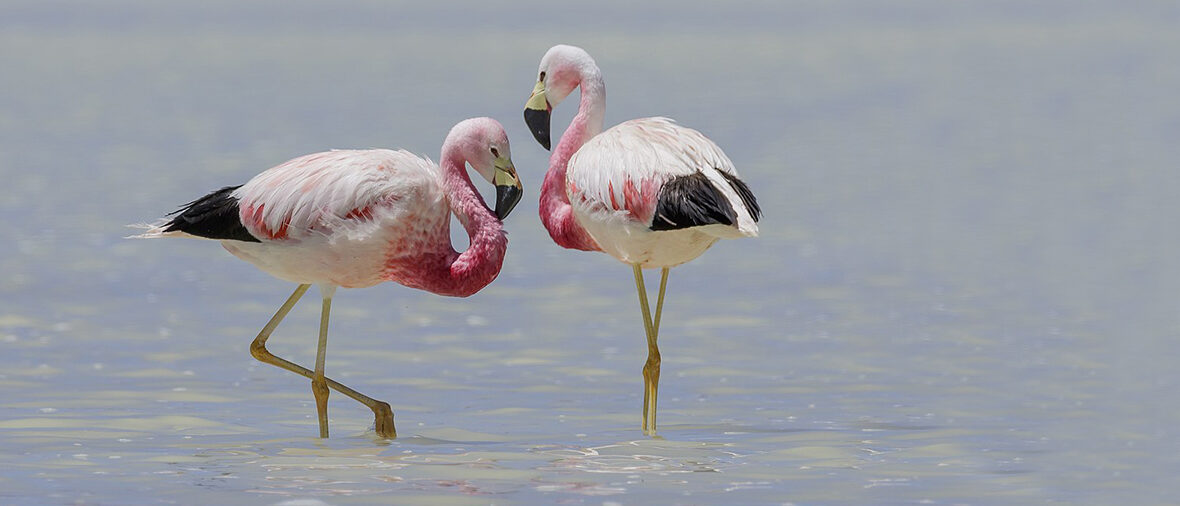
The Andean flamingo can be found in the Andean Mountains in South America, which includes northwestern Argentina, northern-central Chile, southern Peru, and western Bolivia. They prefer highland salt lakes with light vegetation. During the winter months, they migrate to lower wetlands. Unfortunately, these birds face the threats of habitat loss and destruction at the hands of mining and dam construction; nesting disturbances due to recreational activities; hunting; trapping; pollution; and climate change (which can result in droughts and extreme flooding). They are listed as Vulnerable by the IUCN. Their populations are also decreasing.
First the Stats…
Scientific name: Phoenicoparrus andinus
Weight: Up to 10.8 lbs.
Length: Up to 43 inches
Wingspan: Up to 5.3 feet
Lifespan: Up to 50 years
Now on to the Facts!
1.) Andean flamingos, and James’ flamingos typically dwell in the same colonies and even nest together in large colonies.
2.) A group of flamingos is called a colony, flamboyance, regiment, or stand.
3.) These flamingos, like other flamingo species, are gregarious, and form massive stands of 10,000+ individuals.
4.) While migrating they can fly upwards of 700 miles in a day.
5.) They are diurnal (active during the day).
But wait, there’s more on the Andean flamingo!
6.) Communication consists of various methods: stretching their necks and flicking their tails, wing salutes (extending their wings to display their colors), honking, and the males will also growl and grunt to protect their partner.
7.) During feeding they will submerge their whole head and beak upside down in the water, then suck up water and mud. Then, while moving their heads from side to side, they will extract insect larvae, plankton, and small fish from the water and mud.
Did you know…?
Andean flamingos can fly at speeds of up to 37 mph.
8.) Andean flamingos are monogamous (mate for life).
9.) The female will produce a single white egg that hatches in up to 31 days.
10.) Chicks are fed crop milk, a liquid that comes from the parent’s upper digestive tract.
But wait, there’s still more on the Andean flamingo!
11.) Chicks stay in their nest for up to 8 days and then gather into groups called crèches, which can have hundreds of chicks that are tended to by merely a couple handfuls of adult flamingos.
12.) The chicks are unable to defend themselves till up to 10 months old.
Did you know…?
Flamingos hold their breath while eating.
13.) Out of all the flamingo species, only the Andean flamingo has yellow feet and legs.
14.) Even though these birds are statuesque, they are still good swimmers, as long as the water is deep enough.
15.) Like other birds, flamingos have a weak sense of taste.
16.) Flamingos achieve their pink coloration due to their diet. Similar to when humans eat enough carrots, their finger nails turn orange.
Now a Short Andean Flamingo Video!
Be sure to share & comment below! Also, check out the Critter Science YouTube channel. Videos added regularly!
Want to suggest a critter for me to write about? Let me know here.
Some source material acquired from: Wikipedia & IUCN
Photo credit: Thomas Fuhrmann



